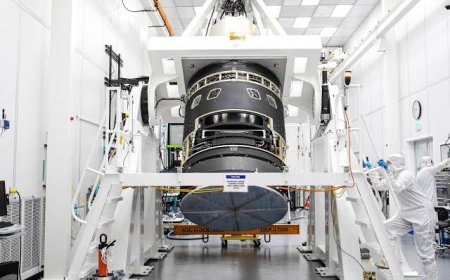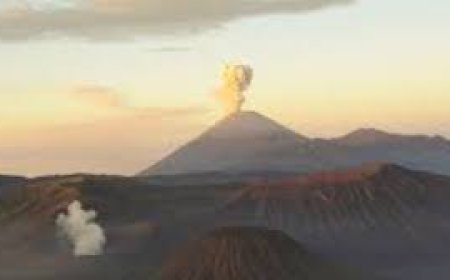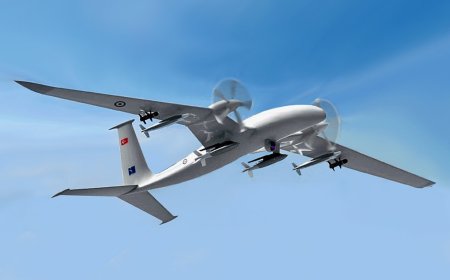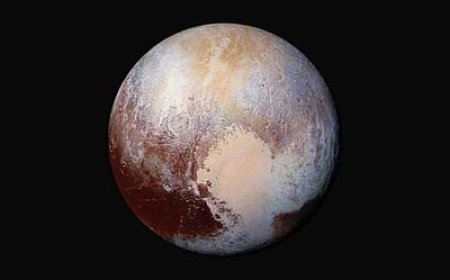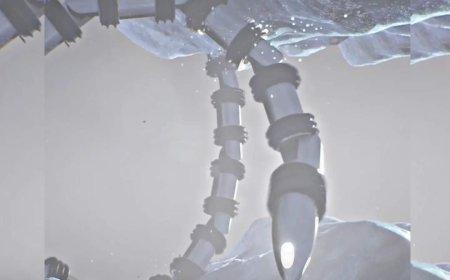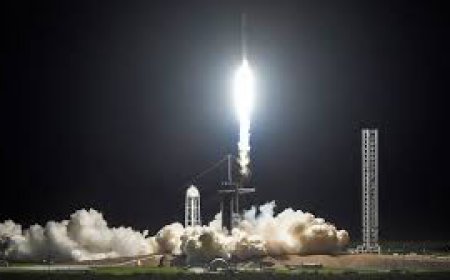NASA Mission Launches to Probe for Alien Life on Jupiter’s Ocean Moon
In a historic step toward answering one of the most profound questions humanity has ever asked—Are we alone in the universe?—NASA has launched the Europal Clipper mission to explore Jupiter’s moon Europa. This complex mission marks a major milestone in space exploration and astrobiology, targeting a celestial body that scientists have speculated for decades could harbor conditions favorable for life. With its vast, icy surface and a hidden ocean beneath many kilometers of ice, Europa has long been considered a prime candidate for the search for extraterrestrial life in our solar system.
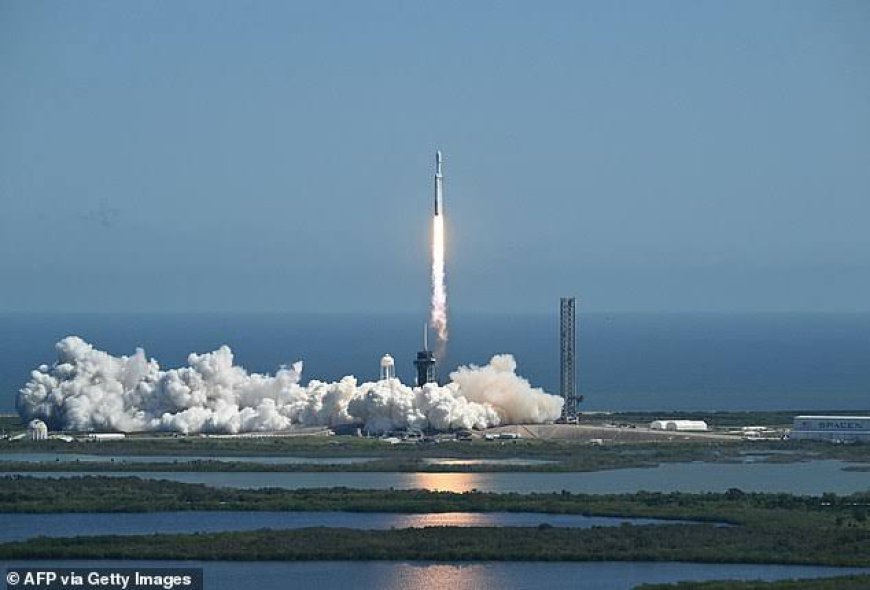
On October fifteenth, twenty twenty-four, the powerful Europa Clipper spacecraft embarked on its ambitious journey to study icy Europa in unprecedented detail for several years. As it begins this remarkable mission, its primary goal is to determine with sophisticated instruments whether the enormous ocean hidden far beneath Europa’s thick ice shell has the necessary conditions, such as chemical energy and organic molecules, to support the emergence and evolution of basic forms of life. This multi-year endeavor will provide scientists with critical insights into Europa’s exotic environment through numerous close flybys, potentially transforming our understanding of the origins and prevalence of life in the vast universe.
Why Europa?
Europa has long fascinated scientists for its peculiar qualities and the plausibility of habitability beneath its briny exterior ocean. Jupiter's smallest of the four primary moons, known together as the Galilean satellites, and the solar system's sixth largest satellite, Europa revolves around the Jovian world at roughly 670,000 kilometers, completing one revolution every 3.5 terrestrial days.
One of Europa's most remarkable attributes is its smooth, icy outer shell, intersected by a convoluted network of ridges and fractures extending far across its glacial face. Below this icy rind, believed to reach several kilometers in depth, lies a tremendous liquid watery realm. Estimates propose this submerged ocean contains more aqueous volume than all of Earth's combined seas, rendering Europa a compelling prospect in the quest for extraterrestrial beings.
The possibility of a liquid ocean underneath Europa's icy exterior has been strengthened by insights gleaned from earlier missions like NASA's Galileo spacecraft, which orbited Jupiter between 1995 and 2003. Galileo's findings hinted that Europa's frozen shell may be floating on a global expanse of salty water maintained in liquid form by the warmth emanating from tidal stresses spawned by Jupiter's tremendous gravitational pull. This phenomenon, known as tidal heating, is pivotal for sustaining a stable environment where life could potentially develop.
Tidal heating arises as Europa is stretched and squeezed by Jupiter's mighty gravitational forces and those of the other Galilean satellites—Io, Ganymede, and Callisto. This process spawns internal warmth, which could support an ocean nestled beneath Europa's icy crust. The existence of fluid water combined with a consistent heat source raises the possibility that Europa could accommodate life, at minimum in its most fundamental manifestations.
The Goal of Europa Clipper Mission:-
From NASA: The moon is thought to have an ocean with more than twice the volume of Earth's liquid water, but its surface also is covered — by some estimates up to roughly 10 meters deep— in a jumble bergs that would be moved up and down like sea ice on our own planet. The primary science goals of the mission are to study: 1) The thickness of Europa's ice shell, 2) The subsurface ocean and it relationship to surface features (such as chaos terrains or cracks), 3) Indicators on the surface that may be related to sites with potential light penetration through the ice into the ocean below;and -4)+ Areas where chemical energy occurs between euro life-Supporting components such as water vapor organic molecules salts.
To accomplish this, the Europa Clipper is outfitted with a very sophisticated scientific instrument package which will enable it to conduct in-depth study of both the surface and subsurface features of Europe. These instruments include:
1. Ice-Penetrating Radar (REASON): This will determine the location and depth of subsurface water, if present; helps to characterize potential for internal activity.
2. Magnetometer (ICEMAG): This instrument will measure Europa's magnetic field, helping to probe the ocean hidden beneath the moon's frozen surface by examining how salt water affects Jupiter's powerful magnetic field.
3. Thermal Emission Imaging System (E-THEMIS): This camera also has the capability to capture high-resolution images, but at wavelengths beyond our human eyesight. That means scientists can now study how temperatures vary over Europa's surface -and they can find out where any geological activity might be happening now.
4. Mass Spectrometer (MASPEX): This instrument analyses the composition of Europa's thin atmosphere, particularly for water vapour and other gases associated with plumes that might be venting out from an ocean beneath its surface.
5. Ultraviolet Spectrograph (Europa-UVS): This spectrograph will search for signs of water plumes on the surface by measuring changes in brightness above and below different wavelengths. If they exist--this is a strong sign that such clouds may be venting out from below into space as well.
6. Imaging System (EIS): Europa Clipper's cameras will capture highquality images from close up and other locations across Europa's surface. When its mission is over, the spacecraft will have entered a new orbit that takes it out beyond Jupiter– together with all those computers, instruments for measuring fields and particles in space; antennae to communicate information back home (or send commands over existing cables); thruster systems for making course corrections every few days etc. It is remotely controlled from Earth during this critical recovery phase.Whenever the devices on the spacecraft fail or are meant to be turned off. Then we can get back to our investigation of Europa's environment. The discovery of plumes on Ceres through Hubble, coupled with Pioneer 10’s detection of a magnetic field around Ganymede, has aroused interest in the search for life within our planet-moon system. A detection of plumes Europa would provide unambiguous evidence--indeed, one might say it could even constitute proof--that life exists beyond the Earth. That discovery probably is years away, and much work remains to be done before attempting such an ambitious undertaking. However with preliminary results like this from Hubble in hand, all the data will be made public for everyone to examine and discuss. That way no one group, duty let alone scientist will be able to cry foul or attempt to suppress discoveries. The spacecraft will perform a series of **close flybys of Europa** during its mission, enabling it to acquire data from different points across the moon’s surface. Not only will Europa Clipper not land on the moon, but it will conduct almost 50 flybys of Europa at altitudes ranging from 25 kilometers to 2,700 kilometers. These flybys will deliver a detailed look at various regions of Europa, providing a comprehensive portrait of its environment and potential habitability.
In Search of Water and Life: What Could Be Europa – the Most Habitable World
Among the most defining features of the Europa Clipper mission is the water, which is considered the most important element for life as we know it. One of the most convincing reasons in favor of moon’s habitability is the existence of liquid water under the ice crust of the Europa. However, water on its own may not be enough; the molecules, ions and energy sources that are essential for life processes must be present in the environment.
It is thought that Europa’s ocean has a direct connection to the moon’s rocky mantle which would enable the same chemical processes as those that take place around Hydrothermal Vent in the Sea bed. Hydrothermal vents are present on the ocean floor at depths where there is no sunlight but they host a miniature universe of life. These systems are powered by chemical energy stores, which is the energy released through the interaction of seawater and hot ‘rock’ beneath the ocean.
If similar hydrothermal hobby is taking place on Europa, it can create an environment wherein easy varieties of existence, including bacteria or other microorganisms, may want to exist. These organisms could no longer rely upon daylight for energy, as existence on the surface of Earth does, however would rather make use of the chemical power produced through reactions among water and rock.
In addition to reading the potential for hydrothermal activity, Europa Clipper will look for symptoms of plumes of water vapor erupting from the moon’s floor. These plumes, if they exist, should offer an instantaneous hyperlink to the subsurface ocean and provide scientists a way to pattern the sea’s composition while not having to drill via the ice. In 2012, the Hubble Space Telescope detected what regarded to be water vapor plumes erupting from Europa’s southern hemisphere, but subsequent observations were inconclusive. Confirming the presence of plumes would be a chief breakthrough, as it would provide a completely unique opportunity to study the sea’s composition immediately.
Exploring Europa’s Surface: Cracks, Chaos Terrain, and Geological Mysteries
Europa’s floor is one of the most charming and enigmatic landscapes within the solar device. Unlike many moons and planets, which might be closely cratered, Europa’s floor is tremendously smooth, with just a few huge impact craters. Instead, the surface is characterised through a complicated network of ridges, fractures, and chaotic terrain, suggesting that it's been reshaped by way of geological strategies over time.
One of the important thing goals of the Europa Clipper task is to study the moon’s surface capabilities in detail and decide how they have been fashioned. The ridges and fractures that crisscross the floor are believed to be the end result of the regular stretching and squeezing of Europa’s ice shell by using Jupiter’s gravitational forces. These tectonic methods may cause the ice to crack and shift, permitting material from the ocean beneath to rise to the surface.
In addition to the ridges and fractures, Europa’s surface incorporates areas of **chaos terrain**, where the ice appears to have been damaged up into large blocks which have drifted and rotated before refreezing in new positions. These chaotic areas are of precise hobby to scientists because they will constitute areas wherein the ice is thinnest, potentially making an allowance for interactions among the surface and the ocean below.
By studying the geology of Europa’s floor, scientists wish to advantage insights into the strategies which have formed the moon’s landscape and to identify regions where future missions could awareness their efforts. For instance, areas of latest geological interest, inclusive of cracks or plumes, may be high targets for further exploration, as they may offer direct access to the subsurface ocean.
The Significance of the Europa Clipper Mission for Astrobiology :-
The Europa Clipper task represents a main leap forward within the area of astrobiology, the take a look at of existence beyond Earth. Astrobiology seeks to reply fundamental questions about the origins, evolution, and distribution of life within the universe. While the look for extraterrestrial existence has traditionally targeted on Mars, Europa offers a compelling opportunity inside the quest to find habitable environments within the sun gadget.
Mars, with its history of liquid water and its capacity for past microbial life, has long been the primary recognition of astrobiological research. However, the discovery of subsurface oceans on icy moons like Europa and Saturn’s moon Enceladus has multiplied the search for lifestyles to new frontiers. These moons may additionally provide environments which are extra hospitable to lifestyles than the floor of Mars, mainly due to the fact their oceans are blanketed from the tough radiation of area via thick layers of ice.
The Europa Clipper venture is a part of a broader attempt through NASA and different area corporations to discover the potential habitability of icy moons. In addition to Europa Clipper, the European Space Agency (ESA) is planning to launch the **Jupiter Icy Moons Explorer (JUICE)** undertaking, so that it will take a look at Europa, Ganymede, and Callisto. JUICE will complement Europa Clipper’s observations by means of focusing on the habitability of those moons, especially Ganymede, that's the biggest moon inside the sun machine
